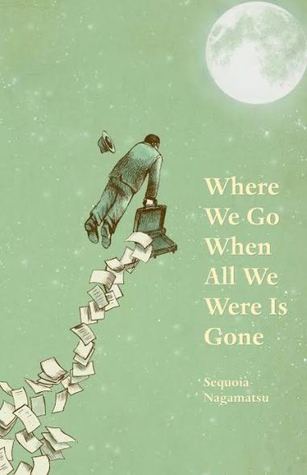“You should be here; he’s simply magnificent.” These are the final words a biologist hears before his Margaret Mead-like wife dies at the hands of Godzilla. The words haunt him as he studies the Kaiju (Japan’s giant monsters) on an island reserve, attempting to understand the beauty his wife saw.
“The Return to Monsterland” opens ‘Where We Go When All We Were Is Gone,’ a collection of twelve fabulist and genre-bending stories inspired by Japanese folklore, historical events, and pop culture. In “Rokurokubi”, a man who has the demonic ability to stretch his neck to incredible lengths tries to save a marriage built on secrets. The recently dead find their footing in “The Inn of the Dead’s Orientation for Being a Japanese Ghost”. In “Girl Zero”, a couple navigates the complexities of reviving their deceased daughter via the help of a shapeshifter. And, in the title story, a woman instigates a months-long dancing frenzy in a Tokyo where people don’t die but are simply reborn without their memories.
Every story in the collection turns to the fantastic, the mysticism of the past, and the absurdities of the future to illuminate the spaces we occupy when we, as individuals and as a society, are at our most vulnerable.
(from Goodreads)
More about this collection
Author Sequoia Nagamatsu’s website
Q&A from IdentityTheory.com with the author
Here’s an interesting part of the interview where Nagamatsu discusses the process of ‘interlining’ the short stories (i.e. making it a linked short story collection):
“ML: This is a novel of interlining stories as well as reappearing characters. How do you approach the writing process? Were these written in any particular order, did you finish one before moving on to the next, or were they all working alongside each other until the end became clear?
“SN: The first few years, I just wrote. I didn’t know this was going to be a book. Once I signed with my agent, that’s when I started to think a little bit more about order and how I wanted this to be more than just a collection. My agent articulated this in a way I liked: she said that there’s a bigness to what I had, and to call it a short story collection didn’t seem quite right. I agreed with that, but I didn’t quite know at the time that I was going to merge my world builder story, which is something that I had written a really messy version of in my MFA program, with my plague or funerary research. I didn’t intend for the world builder to accidentally create this horrific event from this act of love. That came relatively late.”
There’s also a passage in an interview in The Rumpus (2017) which is worth quoting, to give you a gist of Nagamatsu’s storytelling:
“Rumpus: You precede each story in Where We Go When All We Were Is Gone with a kind of Easter egg or teaser—a one-page recipe for summertime Placenta Bloody Mary or directions to stare into a mirror until you don’t recognize yourself or an announcement from the Snow Woman that classes are cancelled due to snow. I love these “quick stories” before the stories—found myself stuck in the spiderwebs of them. Where did this idea originate? They almost feel like a second skin to the stories in the collection.
“Nagamatsu: While I was putting together the collection, I wanted to find a way to make the book seem more cohesive, like an artifact someone might find in the library of a parallel universe where magic is possible. At first, I played around with the idea of a single frame narrative that was broken up throughout the book, which resembled a curator walking visitors through a museum, but I opted for single documents (flyers, signs, etc.) that could serve as a brief punctuation between stories, as well as act as a palate cleanser especially if the previous story was a bit of a downer.”

Leave a Reply